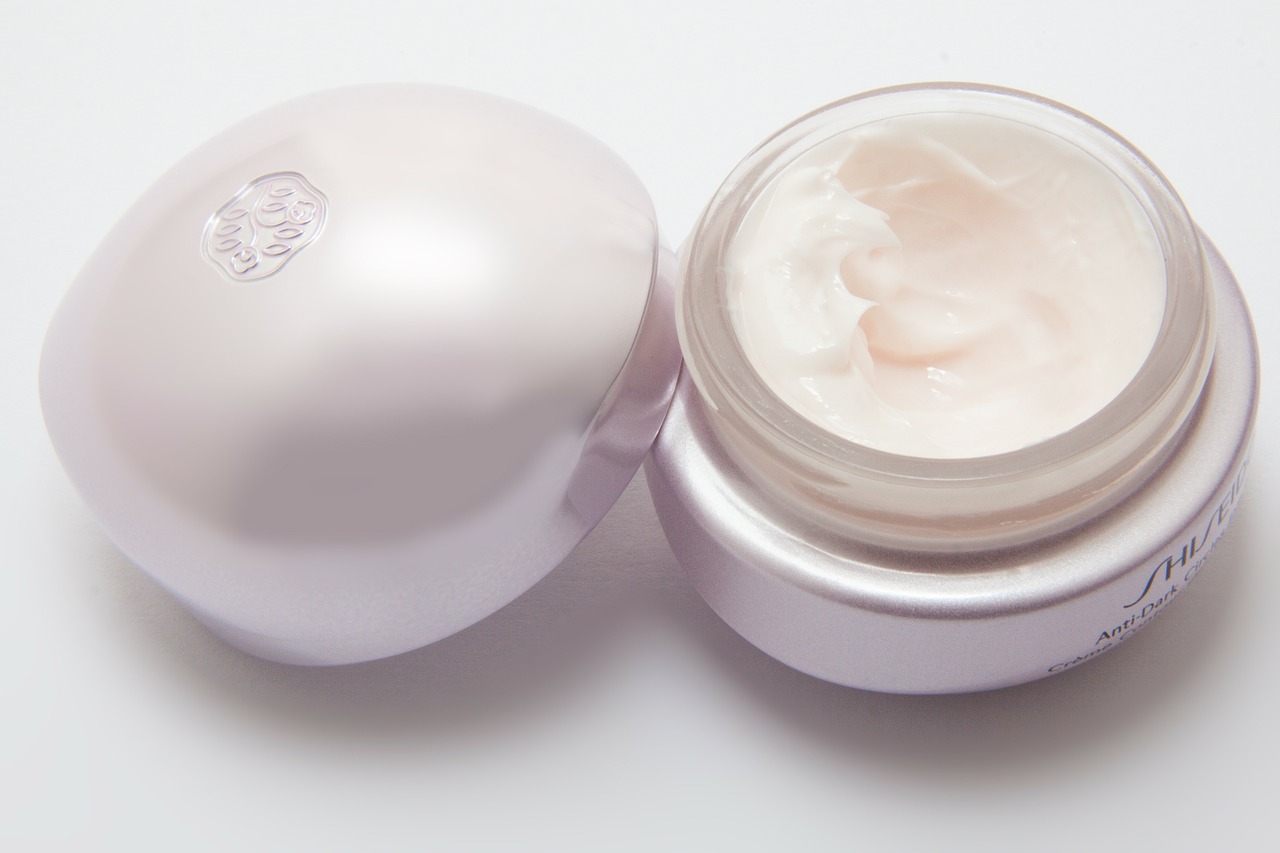Cream (pharmacy) on:
[Wikipedia]
[Google]
[Amazon]
 A cream is a preparation usually for application to the
A cream is a preparation usually for application to the
 A cream is a preparation usually for application to the
A cream is a preparation usually for application to the skin
Skin is the layer of usually soft, flexible outer tissue covering the body of a vertebrate animal, with three main functions: protection, regulation, and sensation.
Other animal coverings, such as the arthropod exoskeleton, have different ...
. Creams for application to mucous membranes such as those of the rectum
The rectum (: rectums or recta) is the final straight portion of the large intestine in humans and some other mammals, and the gut in others. Before expulsion through the anus or cloaca, the rectum stores the feces temporarily. The adult ...
or vagina
In mammals and other animals, the vagina (: vaginas or vaginae) is the elastic, muscular sex organ, reproductive organ of the female genital tract. In humans, it extends from the vulval vestibule to the cervix (neck of the uterus). The #Vag ...
are also used. Creams may be considered pharmaceutical products, since even cosmetic creams are manufactured using techniques developed by pharmacy
Pharmacy is the science and practice of discovering, producing, preparing, dispensing, reviewing and monitoring medications, aiming to ensure the safe, effective, and affordable use of medication, medicines. It is a miscellaneous science as it ...
and unmedicated creams are highly used in a variety of skin conditions (dermatoses). The use of the finger tip unit concept may be helpful in guiding how much topical cream is required to cover different areas.
Creams are semi-solid emulsions of oil and water. They are divided into two types: oil-in-water (O/W) creams which are composed of small droplets of oil dispersed in a continuous water phase, and water-in-oil (W/O) creams which are composed of small droplets of water dispersed in a continuous oily phase. Oil-in-water creams are more comfortable and cosmetically acceptable as they are less greasy and more easily washed off using water. Water-in-oil creams are more difficult to handle but many drug
A drug is any chemical substance other than a nutrient or an essential dietary ingredient, which, when administered to a living organism, produces a biological effect. Consumption of drugs can be via insufflation (medicine), inhalation, drug i ...
s which are incorporated into creams are hydrophobic
In chemistry, hydrophobicity is the chemical property of a molecule (called a hydrophobe) that is seemingly repelled from a mass of water. In contrast, hydrophiles are attracted to water.
Hydrophobic molecules tend to be nonpolar and, thu ...
and will be released more readily from a water-in-oil cream than an oil-in-water cream. Water-in-oil creams are also more moisturising as they provide an oily barrier which reduces water loss from the stratum corneum, the outermost layer of the skin.
Uses
* The provision of a barrier to protect the skin ** This may be a physical barrier or a chemical barrier as with sunscreens * To aid in the retention of moisture (especially water-in-oil creams) * Cleansing * Emollient effects * As a vehicle for drug substances such as local anaesthetics, anti-inflammatories ( NSAIDs orcorticosteroid
Corticosteroids are a class of steroid hormones that are produced in the adrenal cortex of vertebrates, as well as the synthetic analogues of these hormones. Two main classes of corticosteroids, glucocorticoids and mineralocorticoids, are invo ...
s), hormone
A hormone (from the Ancient Greek, Greek participle , "setting in motion") is a class of cell signaling, signaling molecules in multicellular organisms that are sent to distant organs or tissues by complex biological processes to regulate physio ...
s, antibiotic
An antibiotic is a type of antimicrobial substance active against bacteria. It is the most important type of antibacterial agent for fighting pathogenic bacteria, bacterial infections, and antibiotic medications are widely used in the therapy ...
s, antifungals or counter-irritants.
Creams are semisolid dosage forms containing more than 20% water or volatile components and typically less than 50% hydrocarbons, waxes, or polyols as vehicles. They may also contain one or more drug substances dissolved or dispersed in a suitable cream base. This term has traditionally been applied to semisolids that possess a relatively fluid consistency formulated as either water-in-oil (e.g., cold cream) or oil-in-water (e.g., fluocinolone acetonide cream) emulsions. However, more recently the term has been restricted to products consisting of oil-in-water emulsions or aqueous microcrystalline dispersions of long-chain fatty acids or alcohols that are water washable and more cosmetically and aesthetically acceptable. Creams can be used for administering drugs via the vaginal route (e.g., Triple Sulfa vaginal cream). Creams are also used to treat sun burns.
Composition
There are four main ingredients of the cold cream: # Water # Oil # Emulsifier # Thickening agentTopical medication forms
There are many types of preparations applied to a body surface, such as: * ointments – consist of a single-phase in which solids or liquids may be dispersed. There are hydrophobic, water-emulsifying, and hydrophilic ointments. * creams – consist of a lipophilic phase and an aqueous phase. There are lipophilic (W/O) and hydrophilic (O/W) creams, depending on the continuous phase. * gels – consist of liquids gelled by suitable gelling agents. There are lipophilic gels (oleogels) and Hydrophilic gels (hydrogels). * pastes – contain large proportions of solids finely dispersed in the basis. * poultices – consist of a hydrophilic heat-retentive basis in which solids or liquids are dispersed. They are usually spread thickly on a suitable dressing and heated before application to the skin. * topical powders – consist of solid, loose, dry particles of varying degrees of fineness. * medicated plasters – consist of an adhesive basis spread as a uniform layer on an appropriate support made of natural or synthetic material.See also
* Lotion topicalReferences
External links
* {{Dosage forms, state=expanded Dosage forms Drug delivery devices